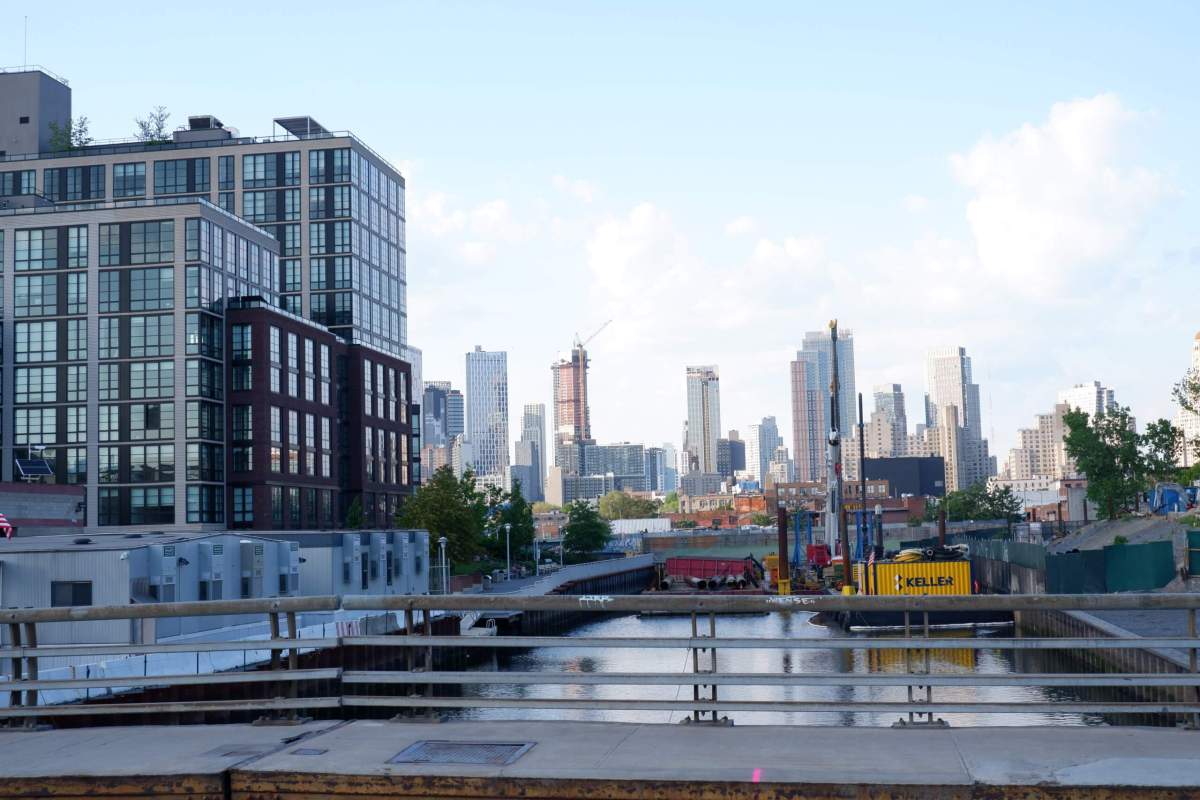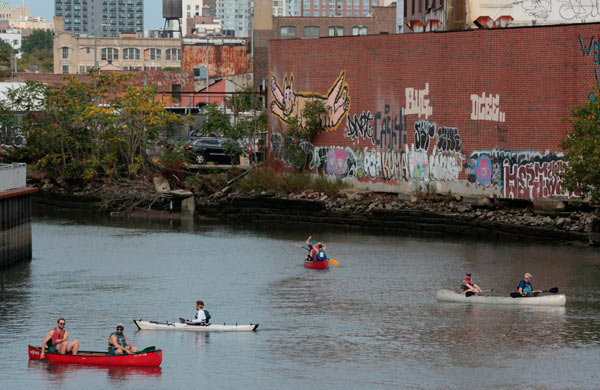A new lawsuit filed against the city aims to overturn the hotly-contested Gowanus rezoning, alleging that land-use change violates state and federal law.
The suit was filed by local activist groups Voice of Gowanus and Friends and Residents of Greater Gowanus, as well as a collection of Gowanus residents, in Kings County Supreme Court late last month. The 38-page complaint accuses the city’s Parks, Housing Preservation and Development, and Citywide Administrative Services departments of violating the National Environmental Policy and National Historic Preservation acts, as well as New York’s Environmental Conservation Law, Historic Protection Act and State Environmental Quality Review Act (SEQRA).
“I have tried many environmental law cases in my decades as a lawyer, but the Gowanus rezoning involves an exceptionally egregious set of failures to comply with the law,” said environmental lawyer Richard Lippes, who is representing the complainants. “This is one of the most complex cases I have seen: the cascading, overlapping failures to comply with state and federal laws is stunning. This is not your run of the mill environmental case. It rises to another order of magnitude entirely.”

Lippes represented plaintiffs in the infamous Love Canal case, where hundreds of families were evacuated from the area surrounding the toxic Canal as dangerous chemicals seeped into their neighborhood, causing serious health risks.
The city council voted nearly-unanimously to approve the 82-block rezoning, which is expected to bring dozens of new developments to the neighborhood in coming years, in November, after a years-long heated debate.
While many neighbors celebrated the vote, especially after then-councilmembers Stephen Levin and Brad Lander successfully negotiated to include the three core demands of the Gowanus Neighborhood Justice Coalitions, some concerns lingered, especially about the environmental impacts of mass development in an ecologically-sensitive neighborhood.
Gowanus is best known for the Gowanus Canal, a Superfund site in the process of being cleaned by the federal Environmental Protection Agency, and the proximity to the canal makes the neighborhood especially prone to flooding.
The lawsuit accuses the Department of City Planning of violating SEQRA by failing to issue a “Findings Statement,” which would analyze the results of the Final Environmental Impact Statement and confirm that the rezoning “avoids or minimizes adverse environmental impacts to the maximum extent practicable.”
Also targeted is the FEIS itself, which the suit says does not fulfill the “hard look standards” required by SEQRA. Lippes wrote that the FEIS did not adequately address elements like future flooding, CSO discharges, and the impacts of wet weather, especially if large parts of the rezoning are completed before the city finishes the construction of two federally-mandated CSO retention tanks, which, when completed, will store about 12 million gallons of water during wet weather events, keeping that water from running back into the Gowanus Canal, potentially re-polluting it.
The city’s Department of Environmental Protection estimates that both tanks will be up and running in 2030, a timeline that violates federal orders to finish construction by 2029.
In August, EPA officials wrote a nearly 50-page response to the rezoning’s Draft Environmental Impact statement, expressing concern that the rainwater models the city used to assess the impact of the rezoning were outdated and inconsistent, and that the agency could not use them to predict the impact of the mass construction on combined sewer overflow in the area. In the same letter, the agency noted that the city’s “optimistic” outlook on handling those environmental concerns clashed with their lack of compliance in building the CSO tanks.
“Gowanus is not just any old neighborhood,” said Katia Kelly, a Voice of Gowanus member and Gowanus resident. “It has a unique and complex set of dangerous toxic pollution, flooding, and sewage overflow problems that have plagued our most vulnerable populations for decades. We tried to warn city officials they were getting it deeply wrong, as did the EPA and Congresswoman Nydia Velázquez, but the city refused to listen.”
Flooding isn’t the only factor Voice of Gowanus and FROGG feel needs to be subject to a “hard look.” A new all-affordable housing complex called Gowanus Green is planned to be constructed on a lot next to the canal called Public Place, a former Manufactured Gas Plant, and the lawsuit says the FEIS does not suitably identify the extent of contamination on the site, which is currently undergoing a state Brownfield Cleanup, or the possibility that the remaining contaminants will eventually migrate into buildings, the canal, or adjacent sites.

Last week, the EPA sent a letter to the state’s Department of Environmental Conservation, expressing concern about the ongoing cleanup effort and saying that further action than is currently planned might be required to keep toxic coal tar and contaminated groundwater from leaching into the canal and neighboring lots.
The suit takes the complaints a step further in accusing the city of violating the National Environmental Policy Act. Because parts of the project were subject to federal review or will be receiving federal funds, the complaint says, the rezoning was party to the law. Because Gowanus Green will likely be receiving funds from the Department of Housing and Urban Development, and as such falls under the scope of NAPL, according to the suit, but the city did not coordinate with federal agencies to make sure the work is compliant with NEPA.
Lippes and the complainants are asking the court to axe the rezoning and issue an injunction until then, as well as award monetary relief to the petitioners. Brooklyn Paper’s requests for comment to DEP and the city were referred to the city’s law department, who had not responded by the time of publication.























